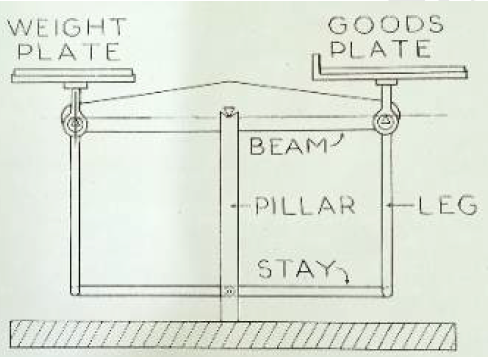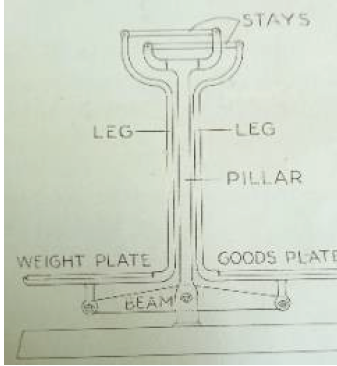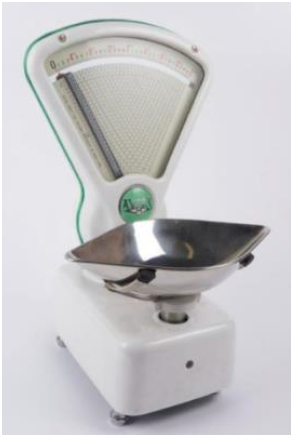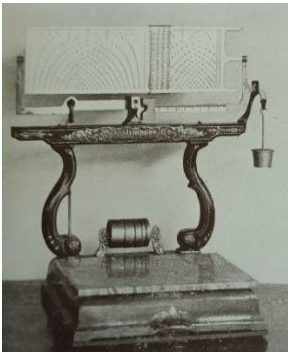Disadvantage of the spring scales is that with repeated use, the spring in the scale can be permanently stretched, which tends to bring less accuracy.
The cam was introduced around 1906 to enable chart graduations of equal width to be obtained. As the pendulum moves outwards, under the influence of the load, to a position of equilibrium, the indicator traverses the chart and indicates the correct weight. Figure shows a semi – self-indicating scale of cam and pendulum type with Beranger lever system.
These are based on Levers, Knife-edges & Bearing System for durability, sensitivity and consistent accuracy. The lever based Self and Semi-self indicating Counter Scales are suitable for quick and accurate weighing in retail shops and in numerous fields of industries.
The cam was introduced around 1906 to enable chart graduations of equal width to be obtained. As the pendulum moves outwards, under the influence of the load, to a position of equilibrium, the indicator traverses the chart and indicates the correct weight. Figure shows a semi – self-indicating scale of cam and pendulum type with Beranger lever system.
These are based on Levers, Knife-edges & Bearing System for durability, sensitivity and consistent accuracy. The lever based Self and Semi-self indicating Counter Scales are suitable for quick and accurate weighing in retail shops and in numerous fields of industries.

S e m i – s e l f – i n d i c a t i n g c o u n t e r s c a l e s were designed to prevent the use of weights of small
denomination when weighing goods in varying quantities to facilitate repetitive manual
weight of a particular loading, precisely or within tolerance.
Assemblies comprise one of the conventional counter scales of Roberval, inverted Roberval,
Beranger or Phanzeder pattern associated with a variable resistant of the cam or eccentric
pendulum, tension spring or torsion strip type.
We have already seen that Roberval principle has formed the basis of many types of counter
scale and for many applications, it was the most convenient form of lever system.

In one of its variations the
stays were arranged above
the beam,
known as Imperial Scale.

In the middle of the 19th century, Joseph Beranger,
a French scale maker, invented a system of levers
by his name. This design was very reliable and
accurate. The Beranger design permitted several
variations and in which one the Phanzeder became
popular in the continent of Europe.


Self-indicating counter scales
Self-indicating weighing machine means a weighing instrument in
which the whole or part of the weight of the goods being weighed is
indicated by a pointer moving over a scale or chart graduated in
units of mass, or a graduated chart moving in relation to a fixed
pointer, or a digital display, or by means of a printed record which
avoids Physical or mental effort in weighing and pricing of goods.
The idea of making the scales to indicate value of the goods, as well as weight, occupied the
minds of inventors in the 19th century.
One of the earliest of the price indicating scales to be made on a
commercial basis was the Stimpson steelyard computing scale,
which made its appearance in 1897, mostly in American market.
The figure shows such a scale, the steelyard carries a flat
rectangular chart graduated in units of weight and with price
computations.
It was soon followed by the Dayton automatic computing scale with suspended pan.
It was soon followed by the Dayton automatic computing scale with suspended pan.
